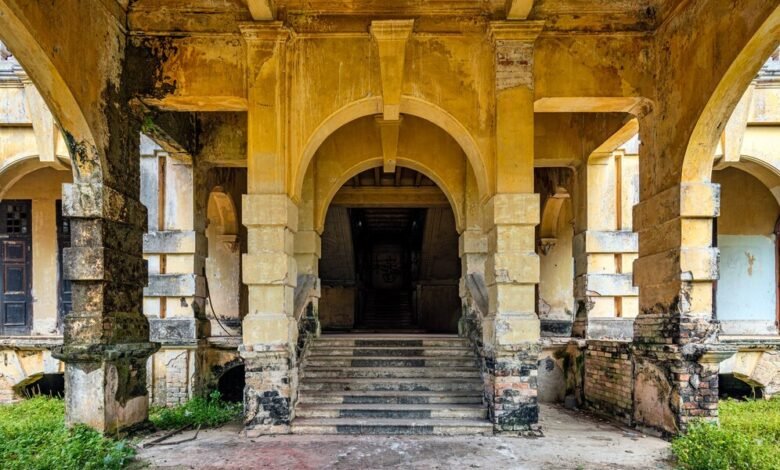Moghalpura – A Historic Quarter Steeped in Hyderabad’s Royal Legacy

Tucked away in the bustling heart of Hyderabad lies Moghalpura, a neighborhood that whispers tales of the city’s glorious past. This historic locality, established during the reign of the Qutb Shahi and Asaf Jahi dynasties, serves as a living museum of Hyderabad’s architectural splendor and cultural richness. Known for its intricate Islamic architecture, age-old markets, and traditional craftsmanship, Moghalpura offers visitors a fascinating glimpse into the Nizam era. From majestic mosques to legendary weapon-makers, this area preserves traditions that have thrived for centuries, making it a must-visit for history buffs, culture enthusiasts, and curious travelers alike.
Headings and Their Explanations
The Historical Roots of Moghalpura
Moghalpura’s origins can be traced back to the early 18th century when the Nizams of Hyderabad developed it as a residential and commercial hub for nobility and artisans. The area flourished under their patronage, becoming a center for Islamic art, calligraphy, and weaponry. Its name is believed to be derived from the Mughal influence that blended seamlessly with Deccan culture during the Asaf Jahi rule. Walking through its narrow lanes, one can still see remnants of grand havelis, ancient water reservoirs, and Persian-inspired gateways that reflect the opulence of a bygone era. The neighborhood stands as a testament to Hyderabad’s syncretic heritage, where Hindu and Muslim traditions coexisted harmoniously.
Architectural Marvels: Mosques, Tombs, and Heritage Structures
Moghalpura is home to some of Hyderabad’s most stunning architectural landmarks. The Moghalpura Mosque, with its towering minarets and intricate stucco work, is a fine example of Qutb Shahi craftsmanship. Nearby lies the Daira Mir Momin, a historic Sufi shrine that attracts devotees seeking blessings. Another hidden gem is the Baradari Palace, a once-grand edifice now in ruins but still exuding old-world charm with its arched doorways and ornate balconies. These structures showcase a blend of Persian, Turkish, and native Deccani styles, offering a visual feast for architecture lovers. Efforts by heritage conservationists aim to restore these sites to their former glory while preserving their historical essence.
The Legendary Armory of Moghalpura
One of Moghalpura’s most fascinating claims to fame is its centuries-old tradition of uruk makers—master craftsmen who forge world-renowned daggers and swords. The neighborhood’s skilled blacksmiths have been supplying finely crafted Hyderabadi kirpans and shamshers (swords) since the Nizam era, using techniques passed down through generations. Even today, connoisseurs and collectors visit Moghalpura’s workshops to acquire hand-forged blades adorned with silver koftgari work. The iconic Moghalpura knife market remains a thriving hub where artisans demonstrate their craft, keeping this dying art alive in the age of mass production.
Bustling Bazaars and Culinary Delights
No visit to Moghalpura is complete without exploring its vibrant markets. The Moghalpura Bazaar is a sensory overload, with shops selling everything from antique brassware and handwoven textiles to fragrant ittar (perfume oils). Food lovers can indulge in Hyderabadi street food like luqmi (savory pastries), haleem (during Ramadan), and kebabs grilled over coal fires. The area is also famous for its Sulemani chai, a spiced black tea traditionally served in kulhads (earthen cups). These markets not only offer goods but also serve as social hubs where locals gather to exchange stories over steaming cups of Irani chai.
Cultural Festivals and Community Life
Moghalpura truly comes alive during religious and cultural festivals. The annual Muharram processions transform its streets into a sea of mourners commemorating Imam Hussain, with tazias (replicas of shrines) paraded through the lanes. During Ramzan, the neighborhood buzzes with night markets and communal iftars. The local Dargah Yousufain hosts qawwali nights that draw music lovers from across the city. These events highlight Moghalpura’s enduring spirit of community, where diverse groups come together to celebrate shared traditions despite modern urbanization pressures.
Conclusion
Moghalpura is more than just a historic locality—it’s a vibrant tapestry of Hyderabad’s royal legacy, artisanal pride, and living traditions. From its awe-inspiring architecture to the rhythmic clang of blacksmiths’ hammers, every corner tells a story of resilience and cultural continuity. As Hyderabad races toward modernity, Moghalpura remains an anchor to its roots, offering visitors an authentic experience far removed from the city’s tech-driven image. For those seeking to understand the soul of Hyderabad beyond its IT hubs and shopping malls, a journey through Moghalpura’s timeless lanes is nothing short of a revelation.
